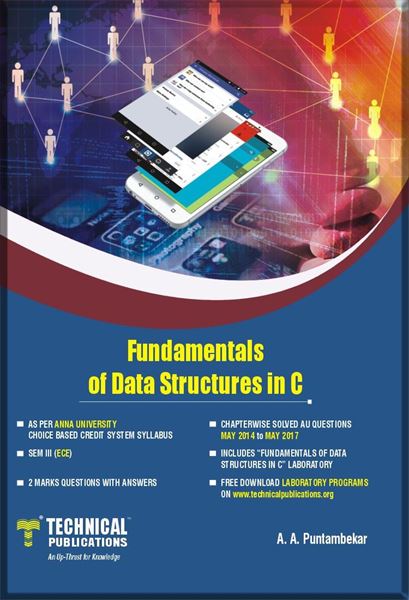
- #Fundamentals of data structures in c how to
- #Fundamentals of data structures in c code
- #Fundamentals of data structures in c download
#Fundamentals of data structures in c download
Download Fundamentals Of Data Structures In C Pul Books now! Available in PDF, EPUB, Mobi Format.
#Fundamentals of data structures in c how to
In order to do this you will need to learn the basic structure of binary search trees, how to insert and delete without destroying this structure, and how to ensure that the tree remains balanced.Synopsis : Fundamentals Of Data Structures In C Pul written by Horowitz Ellis Sahni Sartaj & Anderson-Freed Susan, published by Anonim which was released on 23 January 2022. You will learn about many of the difficulties in accomplishing this task and the ways in which we can overcome them. In this module we study binary search trees, which are a data structure for doing searches on dynamically changing ordered sets. You will see that naive implementations either consume huge amount of memory or are slow, and then you will learn to implement hash tables that use linear memory and work in O(1) on average! You will learn how to implement data structures to store and modify sets of objects and mappings from one type of objects to another one. Its applications include implementation of programming languages, file systems, pattern search, distributed key-value storage and many more. In this module you will learn about very powerful and widely used technique called hashing. By completing this module, you will be able to implement both these data structures efficiently from scratch.
#Fundamentals of data structures in c code
We will see again how simple and natural ideas lead to an implementation that is both easy to code and very efficient. We will then switch to disjoint sets data structure that is used, for example, in dynamic graph connectivity and image processing. We will see that these implementations are based on a beautiful idea of storing a complete binary tree in an array that allows to implement all priority queue methods in just few lines of code. For this reason, priority queues have built-in implementations in many programming languages, including C++, Java, and Python. We start this module by considering priority queues which are used to efficiently schedule jobs, either in the context of a computer operating system or in real life, to sort huge files, which is the most important building block for any Big Data processing algorithm, and to efficiently compute shortest paths in graphs, which is a topic we will cover in our next course. Module 3: Priority Queues and Disjoint Set Union It is used both for Dynamic Arrays analysis and will also be used in the end of this course to analyze Splay trees. Amortized analysis is very often used to analyse performance of algorithms when the straightforward analysis produces unsatisfactory results, but amortized analysis helps to show that the algorithm is actually efficient.

Here, we also discuss amortized analysis: a method of determining the amortized cost of an operation over a sequence of operations. In this module, we discuss Dynamic Arrays: a way of using arrays when it is unknown ahead-of-time how many elements will be needed. Module 2: Dynamic Arrays and Amortized Analysis Once you’ve completed this module, you will be able to implement any of these data structures, as well as have a solid understanding of the costs of the operations, as well as the tradeoffs involved in using each data structure. Next, we look at trees: examples of how they’re used in Computer Science, how they’re implemented, and the various ways they can be traversed.

From there, we build up two important data structures: stacks and queues. We start this module by looking in detail at the fundamental building blocks: arrays and linked lists. In this module, you will learn about the basic data structures used throughout the rest of this course. We look forward to seeing you in this course! We know it will make you a better programmer. What are good strategies to keep a binary tree balanced?.How to implement a hash table so that the amortized running time of all operations is O(1) on average?.


A good algorithm usually comes together with a set of good data structures that allow the algorithm to manipulate the data efficiently.


 0 kommentar(er)
0 kommentar(er)
